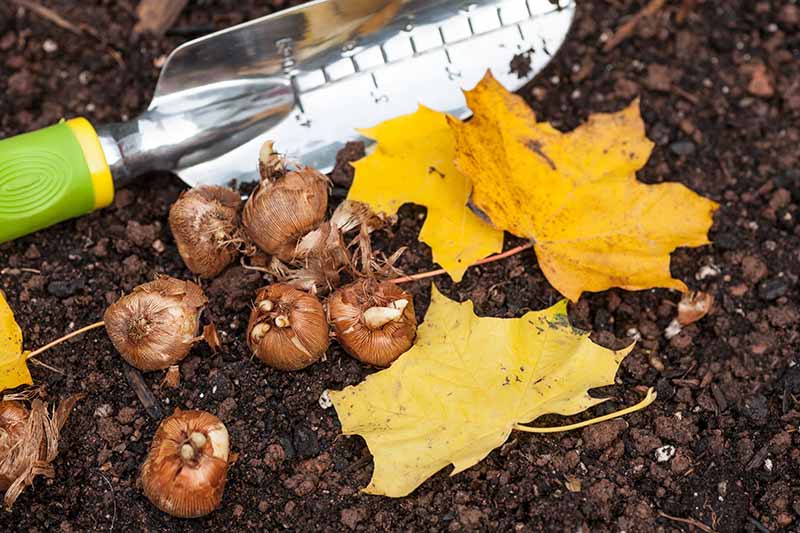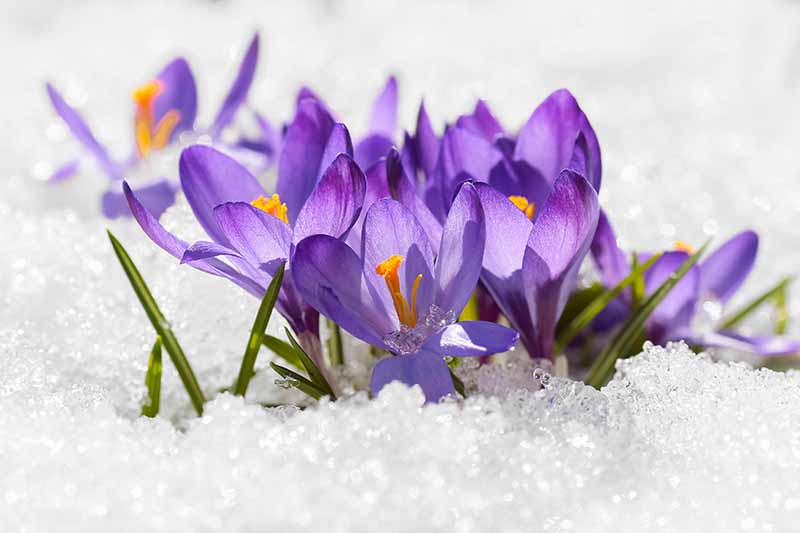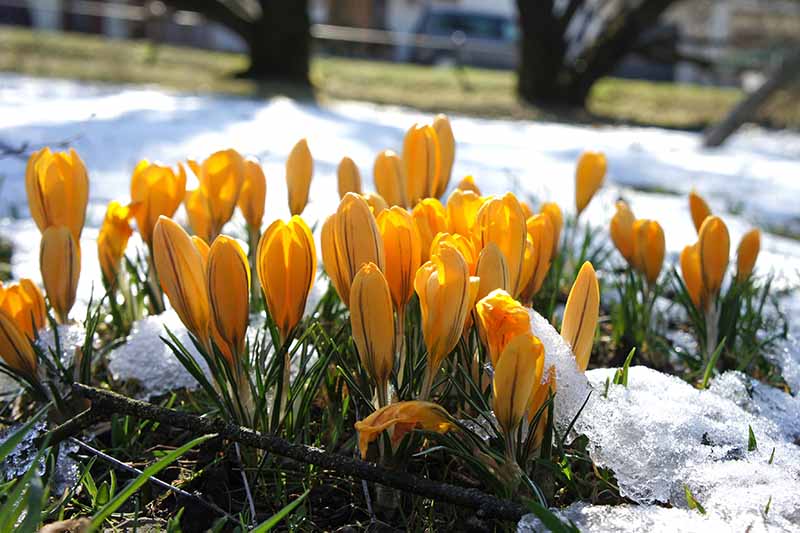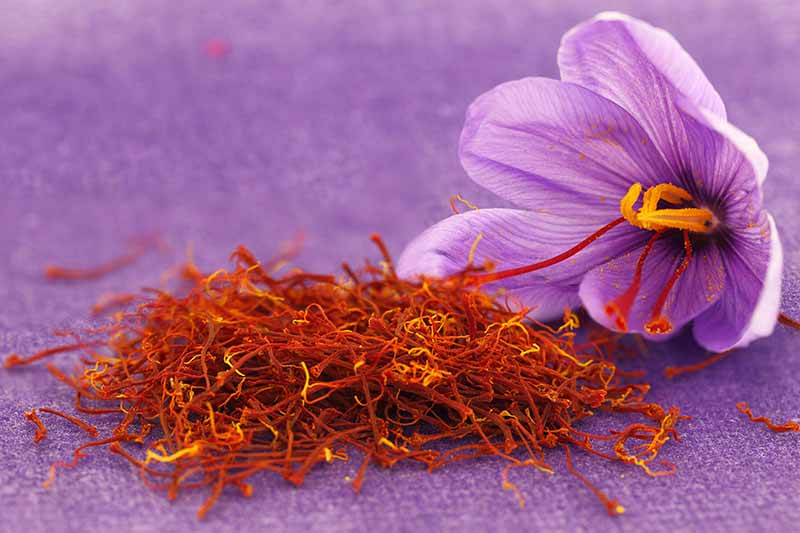But when, exactly, do you have to plant crocus bulbs, technically called corms, in order to see a bounty of flowers? Of the three most popular varieties – snow (Crocus chrysanthus), Dutch (C. vernus), and saffron (C. sativus) – two are vernal and one is autumnal, so planting times differ, and vary according to your USDA Hardiness Zone. We link to vendors to help you find relevant products. If you buy from one of our links, we may earn a commission.
When to Plant Snow and Dutch Crocus Varieties
Both snow and Dutch varieties are hardy in USDA Hardiness Zones 3-8. These two varieties are vernal, which means they bloom in spring.
But of course, the lowest extreme temperature in Zone 3 is very different than it is in Zone 8, and planting times need to be adjusted accordingly. I live in Alaska, in Zone 4. Those of us living in states with cold winters stretching from Washington to Maine and down through Utah, Colorado, Kansas, and Ohio – in other words, gardeners in Zones 3-6 – need to plant crocus corms in September and October. Those in warmer climates will generally aim to plant their corms closer to November.
In either case, the exact month for planting depends on one thing: the average date of the first hard frost in your area, when outside temperatures fall below 28°F for several hours at a stretch. Count back six to eight weeks before your average first frost date and you’ll know when to plant your corms. Read on. Not sure how to use a soil thermometer?
How to Use a Soil Thermometer
Eight weeks before the average first frost date in your area, head out into the yard in the morning – the earlier, the better. The soil’s more likely to be at its coldest, and that’s when you want to measure the temperature. Stick the probe three to four inches deep in the soil where you plan to plant your corms.
Wait until the thermometer finishes reading. If the temperature is 61°F or higher, take the temperature again the following day and the day after, until you get a reading of 60°F or below. Crocuses love the cold, so don’t worry if your soil is well below 60°F when you take the temperature. Just get those corms into the ground as soon as possible so they can burrow down for the long, cold winter ahead and prepare for their spring debut.
If you live in Zone 9, you can still grow crocuses, but you’ll have to chill the bulbs in the refrigerator for 12-15 weeks before planting. In midwinter or early spring, depending on your zone, plant them in trenches three inches deep. Crocus corms need chilling because as they are native to regions with cold winter temperatures, and they require a cold period in order to start pushing through the earth and flowering.
Plant Crocuses Together
Unlike other plants, crocuses don’t mind company. For bright clumps of blooms, plant them in groups of three to nine corms. First, choose a sunny or partly shady area. Then dig a trench three inches deep if you live in USDA Zones 6-8, or four inches deep for Zones 3-5, to provide extra insulation. Place the corms in the trench, flat side down and about two inches apart.
The opposite side of the bulb will have a small point and sometimes even new shoots beginning to form. This side should face upward. Cover the corms with soil, give them a good watering, and start daydreaming about your springtime reward.
When to Plant Saffron Crocus
Are you impatient in your desire to see those brilliant crocus blooms in your yard? If you live in Zones 6-10, you’re in luck. You can plant the saffron variety, C. sativus, mother of the precious saffron spice, in your yard in August for colder regions, or in September in the warmer zones in this range. In this case, you want to plant the bulbs at least six weeks before the first frost.
Because saffron crocus corms are more heat-resistant than the vernal varieties and don’t need a chilling period, you don’t need to worry as much about soil temperature when you plant. Saffron crocuses bloom in just two months, providing you with a burst of color before winter tightens its grip on the land. Even if you live in Zones 5 and below, go ahead and plant saffron crocuses outdoors in a pot at the beginning of August. Then bring the plant indoors before the first frost, and watch the blooms brighten up your living space within a few weeks. Just make sure your indoor plant gets plenty of sunlight, or use a grow light during the day.
You can also harvest the long red stigmas of the saffron crocus and dry them for use in delicious recipes, like this one for cardamom saffron cookies from our sister site, Foodal.
And every year thereafter, your plants will multiply with little help from you. They’re dependable, stouthearted little plants that can lift your spirits just when you need it. Do you have any tips, questions, or comments about when to grow crocuses? Let us know in the comments below. For more tips on propagating flowers in your garden check out these articles:
When and How to Save Native Perennial Aster Seeds How to Propagate American Beautyberries How to Propagate Hellebores










